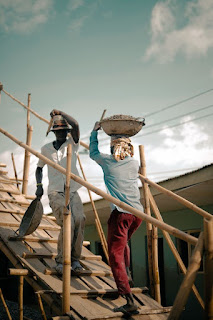The Impact of Climate Change on Construction
Climate change is having a significant impact on the construction industry.
Rising temperatures and extreme weather events are causing damage to buildings and infrastructure, while also increasing the cost of construction and maintenance. As a result, builders and architects are being forced to re-think the way they design and construct buildings, in order to make them more resilient to the effects of climate change.
One of the most immediate impacts of climate change on construction is the increase in extreme weather events. Floods, storms, and heatwaves are becoming more frequent and more severe, causing damage to buildings and infrastructure that can be costly to repair. For example, in 2017, Hurricane Harvey caused an estimated $125 billion in damage to the Houston area, much of it to buildings and infrastructure. Similarly, the California wildfires in 2018 caused an estimated $16.5 billion in damage, again, with a large percentage of the damage to buildings and infrastructure.
In order to mitigate the impact of extreme weather events on construction, builders and architects are being forced to re-think the way they design and construct buildings. For example, they are using more durable materials, such as concrete and steel, in order to make buildings more resistant to damage from floods, storms, and other extreme weather events. They are also designing buildings with "green roofs" and other features that can help to mitigate the effects of heatwaves and reduce the urban heat island effect.
Another impact of climate change on construction is the increase in temperatures. Rising temperatures can cause a variety of problems for buildings and infrastructure, such as increased energy consumption for cooling, and damage to materials and systems due to thermal expansion. Architects and builders are responding to this challenge by designing buildings that are more energy-efficient, with features such as high-performance windows, insulation, and shading devices, to help reduce the need for cooling.
Climate change is also affecting the cost of construction and maintenance. For example, the cost of materials is increasing as a result of extreme weather events, such as floods and storms, which can disrupt supply chains and lead to shortages of certain materials. In addition, the cost of labor is also increasing, as workers are required to take more precautions to protect themselves from extreme heat and other weather-related hazards.
In conclusion, Climate change is having a significant impact on the construction industry. Extreme weather events, rising temperatures, and other climate-related challenges are causing damage to buildings and infrastructure, while also increasing the cost of construction and maintenance. Builders and architects are being forced to re-think the way they design and construct buildings, in order to make them more resilient to the effects of climate change. This includes using more durable materials, designing buildings with features that can help to mitigate the effects of heatwaves, and making buildings more energy-efficient. As the climate continues to change, it is likely that the construction industry will continue to adapt in order to meet these challenges.


No comments:
Post a Comment